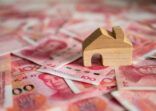Yesterday the Hong Kong dollar leapt as much as 0.14% in its biggest move since December, finally moving off the weak end of its trading band against the US dollar. The jump came after the territory’s de facto central bank, the Hong Kong Monetary Authority (HKMA), had spent $2.8bn defending the currency peg since the start of March, according to Bloomberg.
The Hong Kong dollar has been anchored to the greenback since 1983, and its trading band has been fixed at HK$7.75 to HK$7.85 since 2005. Several times the peg has been tested — notably in the 1997 Asian crisis — but it has never been breached.
However, rising US interest rates last year tempted investors to switch out of local dollars into higher yielding US dollars. Domestic banks, flush with cash, had failed to replicate the HKMA’s move to mirror the US Federal Reserve’s interest rate hikes.
Intervention by the HKMA over the last few weeks narrowed the interest differential, finally squeezing speculators who had sold the Hong Kong dollar, according to FX market commentators.
Yet, Hong Kong dollar-denominated bond funds have taken these recent gyrations in their stride.
The best performing fund over three years, out of 16 available to local retail investors, is the HS Hong Kong Bond Fund, with a 10.63% cumulative return. That is a better US dollar return than from the average Asia-Pacific fixed income fund (8.18%), US fixed income fund (5.63%) and global fixed income fund (5.31%), according to FE Analytics data.
To achieve that return, the HS fund has moved down the credit curve, taking exposure to corporate bonds denominated in Hong Kong dollars — and annualised volatility is quite high (2.88%) compared with US fixed income funds (2.01).
However, the JP Morgan Provident Stable Capital Fund, which is the second best performing Hong Kong dollar fixed income fund (6.59%), has achieved its return with volatility of only 2.07% by investing in mainly government bonds. The Fidelity Global Investment Hong Kong Bond Fund has the third best returns (6.05%) — with higher volatility of 3.07%, perhaps because of its exposure to property bonds.
Moreover, the three funds, as well as every other fund within the Hong Kong fixed income sector, have posted positive US dollar returns during the last one month and three-month periods, despite downward pressure on the local currency.
Top 3 Hong Kong dollar bond funds vs global and US fixed income sector averages


















